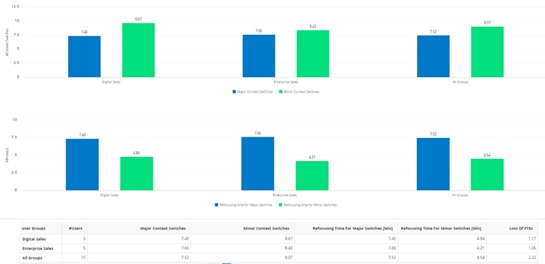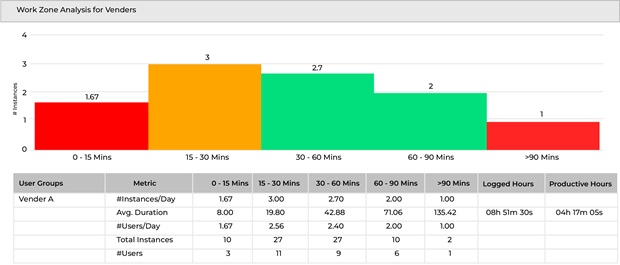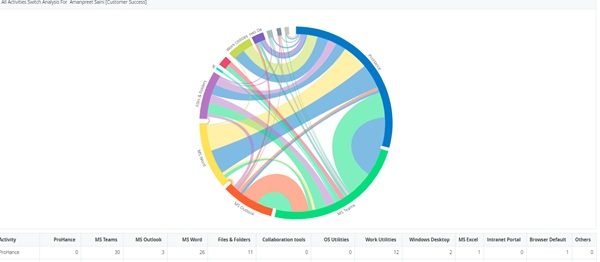Optimizing Work Efficiency by Reducing App Toggling for Enhanced Productivity

Table of contents
By Arvind Sagar, Head of Professional Services, ProHance
Numerous studies highlight the alarming amount of time employees waste toggling between different apps and websites. A recent study of 20 teams across three big employers found that workers toggled between different apps and websites 1,200 times each day. That’s just under four hours a week, or roughly five weeks a year, spent hitting the Alt-Tab key. The researchers dubbed it the “toggling tax,” but it’s better known among psychologists as context switching — a habit that makes it hard to focus and, over time, stresses us out.
According to research, the average employee wastes an entire month of productivity every year switching between different applications. In 2022, organizations deployed 187 apps on average, but close to 30% of those apps were either duplicative or added no value.
Why it’s a Problem…
Multitasking across disparate applications is a prevalent issue within organisations, resulting in suboptimal employee performance and reduced efficacy. The repercussions of this extend beyond reduced output, as it can lead to amplified stress, lack of focus, and diminished engagement. This can be attributed to the difficulty of managing a plethora of disparate tools and websites which a modern worker encounters daily. Ascertaining the impact in terms of wasted time, fiscal resources, and decreased productivity for an enterprise underscores the gravity of the situation.
How ProHance Can Help
By leveraging ProHance, a state-of-the-art Workplace Analytics & Operations Enablement Platform, organisations can gain valuable and actionable insights for making informed decisions in the context of a complex, distributed, and hybrid workforce. With ProHance’s advanced analytics capabilities, users can seamlessly access real-time data and insights about their work processes. This allows them to efficiently pinpoint areas of their work that can be optimised to enhance productivity, while reducing the need for frequent switching between disparate applications and tools.
Benefits of Using ProHance:
ProHance offers the following analytics to improve productivity:
– Context Switching: Context switching is defined as moving from productive to non-productive work. This report can help identify distraction amongst users/teams and reduce non-value-added instances. Major context switching would be when the switch is for more than 5 minutes and minor when it is less than 5 minutes. Refocusing time is the exact time it took the user to move back to productive activity. One FTE (full time equivalent) = 7 hours 30 minutes (which is one man day).

– Work zone analysis: Work zone analysis helps measure the distractions of the user. A distraction is any movement from a productive activity to a non-productive activity. ProHance measures all the distractions of the users and maps it in the certain time range buckets (0-15 minutes, 15-30 minutes, 30-60 minutes). Ideally teams should have more instances in 30-60 minutes or 60-90 minutes so that they can be more effective/productive by being in the zone.

– Application Switch Chart: ProHance’s USP lies in being able to generate a switch analysis chart that divides the time a user spends switching between various programs. This can enable the user to keep track of the time spent on each application, how they are switching between all of them and in what order.

These three analytics can help understand the nature, degree and depth to which the toggling between applications and tools is impacting a particular team/worker. Subsequently, training, automation, and process improvement projects can be undertaken to reduce the adverse impact on an organisation and its employees.



